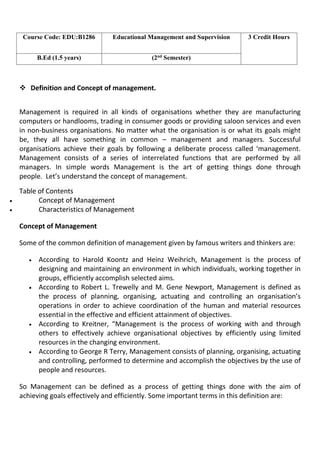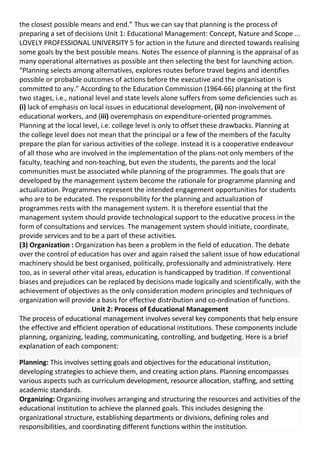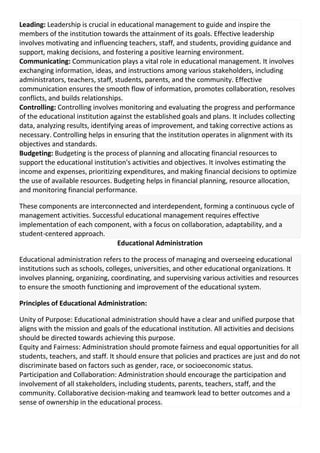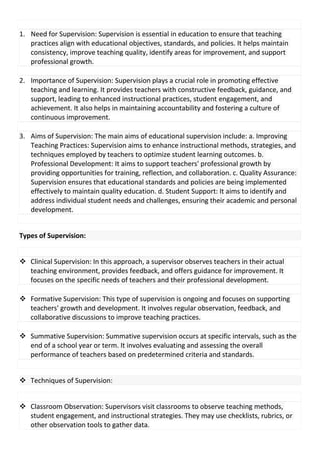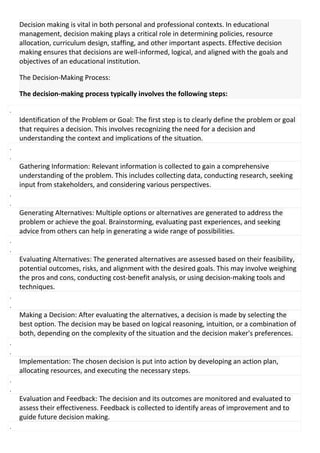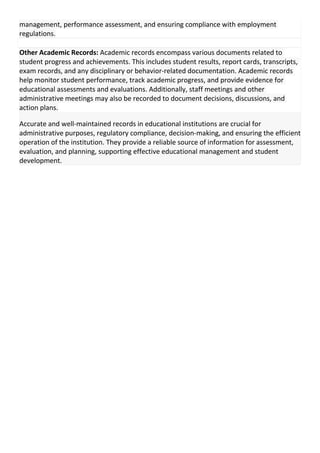The document defines management as the process of achieving organizational goals through planning, organizing, leading, and controlling resources. It specifically explores educational management, outlining the roles, responsibilities, and key areas in managing educational institutions, aiming for effective and efficient education. Additionally, it discusses decision-making processes, supervision, and the importance of leadership, communication, and collaboration in fostering quality education.
